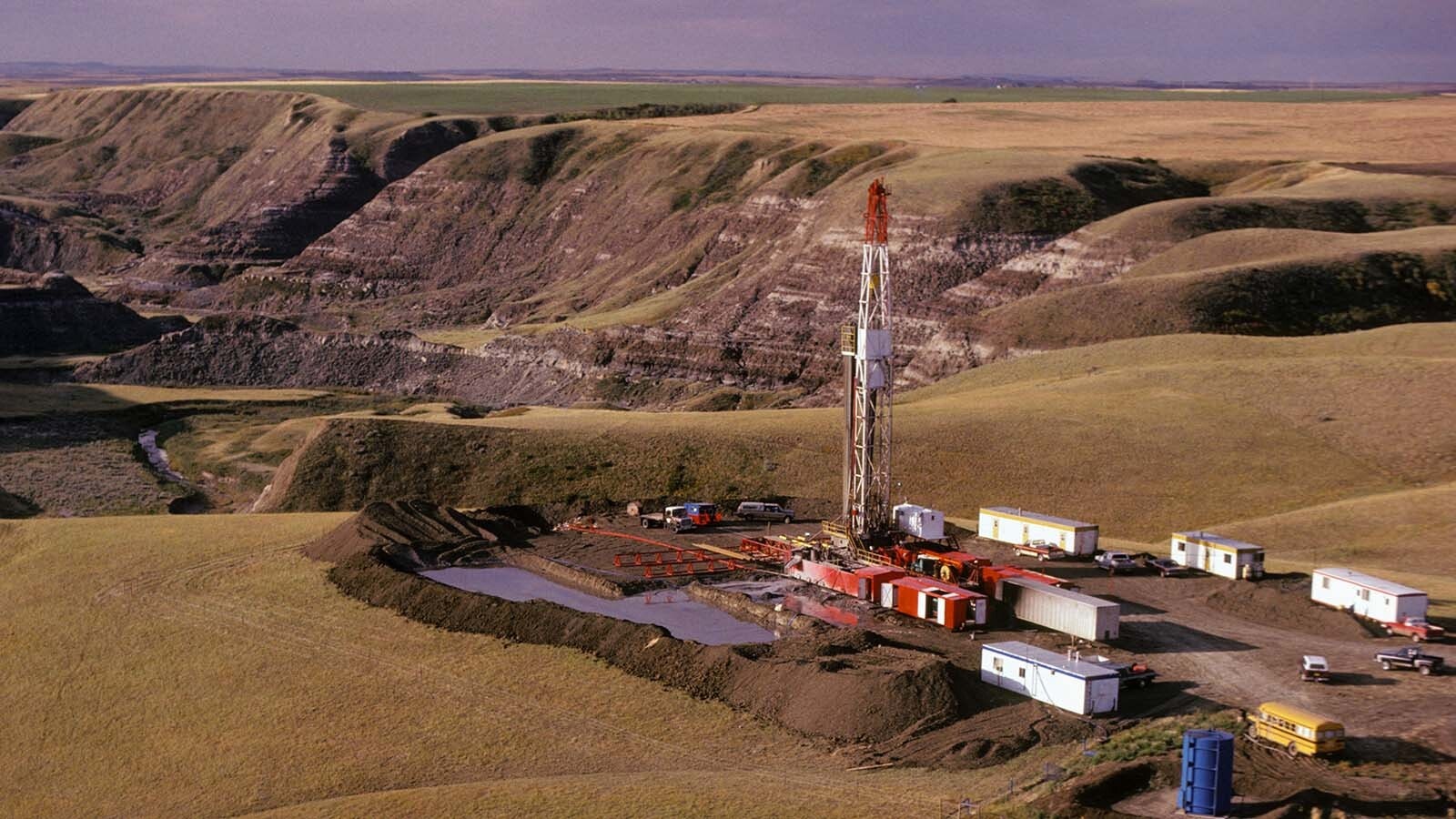Research indicates energy development played a role in declining mule deer populations, but it’s only one part of a complex problem, a University of Wyoming researcher said.
“When mule deer are present on winter range, we tend to see movement away from energy development,” said Kevin Monteith, a UW assistant professor of natural resource science. “And, when they are near development they tend to be more vigilant and less interested in feeding. I wouldn’t say (energy developments) are the primary factor of declining populations, but with certainty, I can say they are contributing factors.”
In a draft plan for mitigating Chronic Wasting Disease, Wyoming Game and Fish reported the state’s mule deer populations are down about 40 percent since the 1970’s, and for years, researchers across Wyoming have tried to answer the question of why.
Working through the Wyoming Cooperative Fish and Wildlife Research Unit, Monteith’s team researches how large ungulates such as deer, moose and pronghorn interact with their habitat.
Using data collected since the 1990s, Monteith and fellow researchers were able to determine deer traveling from their winter range to their summer range ate less than usual when traveling near oil and gas well pads.
“We’ve known for sometime that deer tended to avoid energy development on winter range,” Monteith said. “But on the surface, there wasn’t a great connection between that behavior and the population declines.”
From 2015 to 2017, Monteith gathered data on mule deer in the Upper Green River Basin with the intent of drilling down on the connection between habitat usage, energy development and population flux.
The study did not yield a definitive connection, but rather expanded on the scientific community’s understanding of mule deer behavioral patterns near well pads.
“We tend to see (the deer) are not making as complete use of food on land near energy development as they are in other places,” Monteith said. “Food is that ultimate building block. If we lose food on the landscape, we would expect a population decline to occur thereafter.”
In response to his research, many people pointed out an abundance of deer traveling near developed areas.
“These results are not counter to those observations,” Monteith said. “Our results are not saying the animals we monitored were never next to a well pad. They absolutely were.”
But after comparing all the places they lived throughout the winter, his team determined the deer didn’t eat as much when near to energy developments.
Gadget science
Much of Monteith’s work is made possible by advances in GPS technology since the turn of the century, said Hall Sawyer, a wildlife biologist who published research papers with Monteith in 2017 and 2019.
“There’s two tools that have certainly revolutionized the way in which we collect animal movement data,” Sawyer said.
The first is GPS tracking collars.
Sawyer conducts research similar to Monteith’s, but for the private sector through Western Ecosystems Technology (WEST), Inc., based in Laramie.
To help with Monteith’s winter range studies, Sawyer shared data his company collected since the late ’90s.
“GPS collars get better every year,” Sawyer said. “Before GPS, people used VHF collars. You’d have to go out with a big ol’ antenna and listen for an animal.”
The results were varied, and at times, inaccurate, he said.
“Fifteen years ago, we had collars that could collect a couple hundred locations and would last about six months,” Sawyer said. “Nowadays, we have collars that can collect locations every hour, 24 hours a day for several years at a time.”
The second significant advancement is the use of helicopters and net guns to capture animals prior to collaring.
“The challenging part is you have to put those collars on the animals,” Sawyer explained. “Before helicopter-net gunning, the techniques were really labor intensive and not very efficient.”
With the help of these advancements, wildlife research entered a new era of understanding animal behavior.
“If you’re going to manage any wildlife population you need to understand when and why animals move,” Sawyer explained.
What’s next?
While neither Sawyer’s nor Monteith’s research determined energy development played a primary role in mule deer population declines, it will serve to educate the scientific community and help wildlife managers mitigate potential damage future developments could cause, Monteith said.
“The hope is this sort of research can help wildlife managers make more informed decisions,” he said, explaining managers have to sign off on development permits. “The unknowns and uncertainty can create tension between different groups.”
Speculation can slow or even halt the permit process, causing problems between the permitting authority and the applicant. With an in-depth analysis of cause and effect in hand, Monteith said he hopes his research can benefit everyone involved in the energy development process.
The field work on winter range may be complete, but the research continues, he said. Monteith is currently working to publish another paper related to his findings.
“Now that we understand the effects, the next step is to develop better strategies for habitat management,” he explained.
Sawyer said the research conducted by WEST, UW and the Cooperative Fish and Wildlife Research Unit helped developers create a pipeline for liquid waste removal which reduced herd disturbance. And the studies showed directional drilling from a single well pad also mitigated some of the unproductive behaviors exhibited by mule deer near well pads.
“Directional drilling multiple wells from a single pad and liquid gathering systems are really good practices,” Sawyer said. “But while they help minimize disturbances, they do not eliminate them.”





